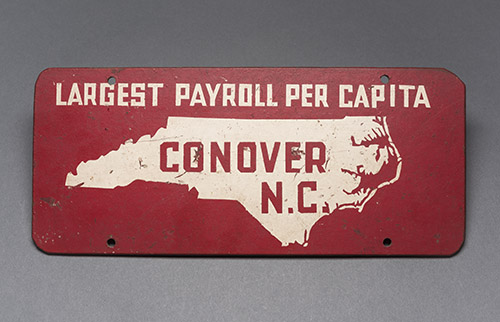“Largest payroll per capita” may be a meaningful metric to economists, but it seldom appears in Google — and nowhere attached to Conover. Among those bragging: Coos Bay, Oregon, and Frankfort, Michigan.
This promotional license plate likely dates to World War II, when metal shortages inspired Montana, Virginia and other states to make their official plates from a soybean-based fiberboard that proved more popular with goats, horses and mice than with motorists.
Conover has a diverse manufacturing history — including the delightfully named Picker Stick and Handle — but its population during the 1940s barely topped 1,000, so the per capita distinction may also grow out of small sample size.
.

